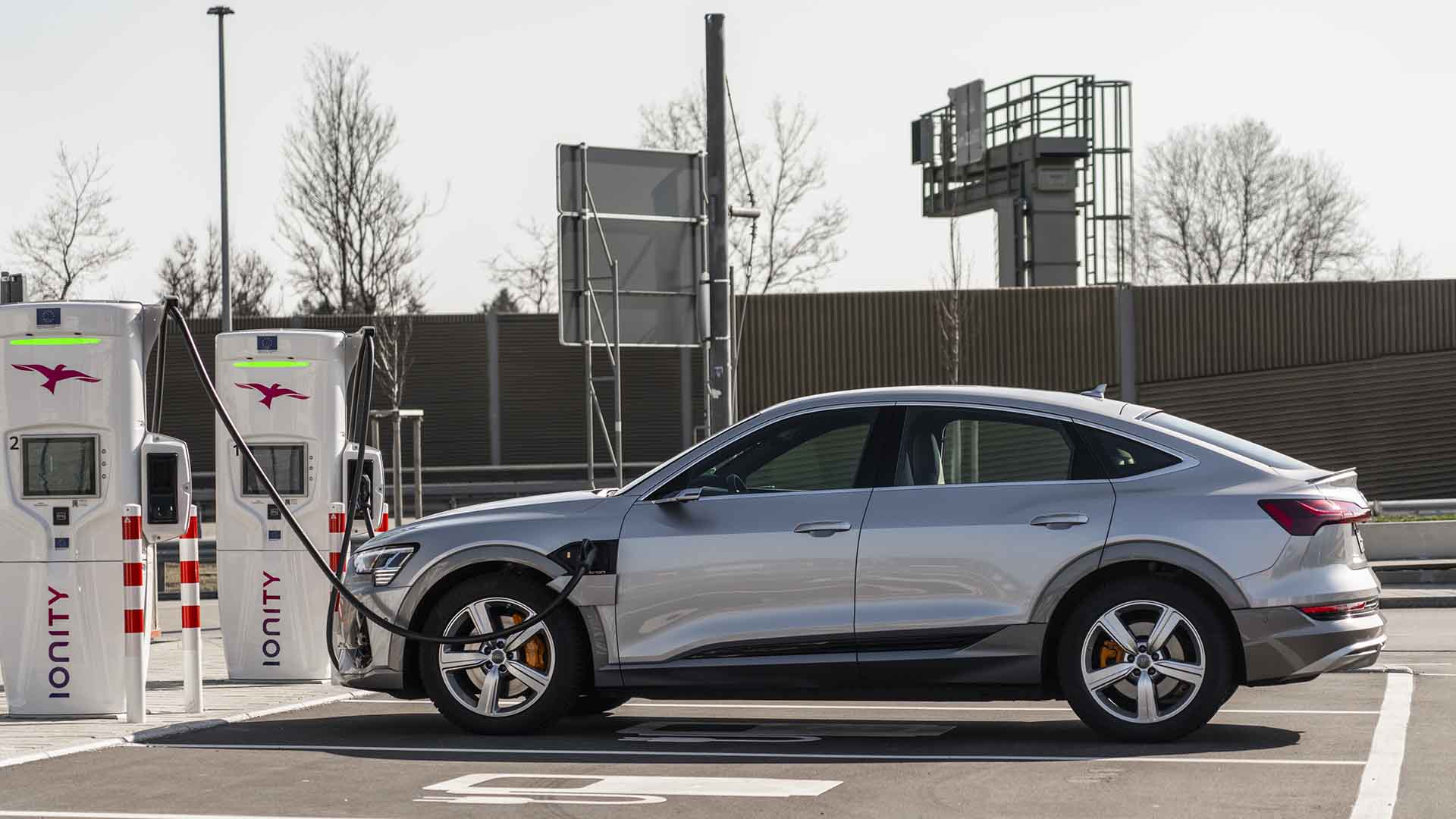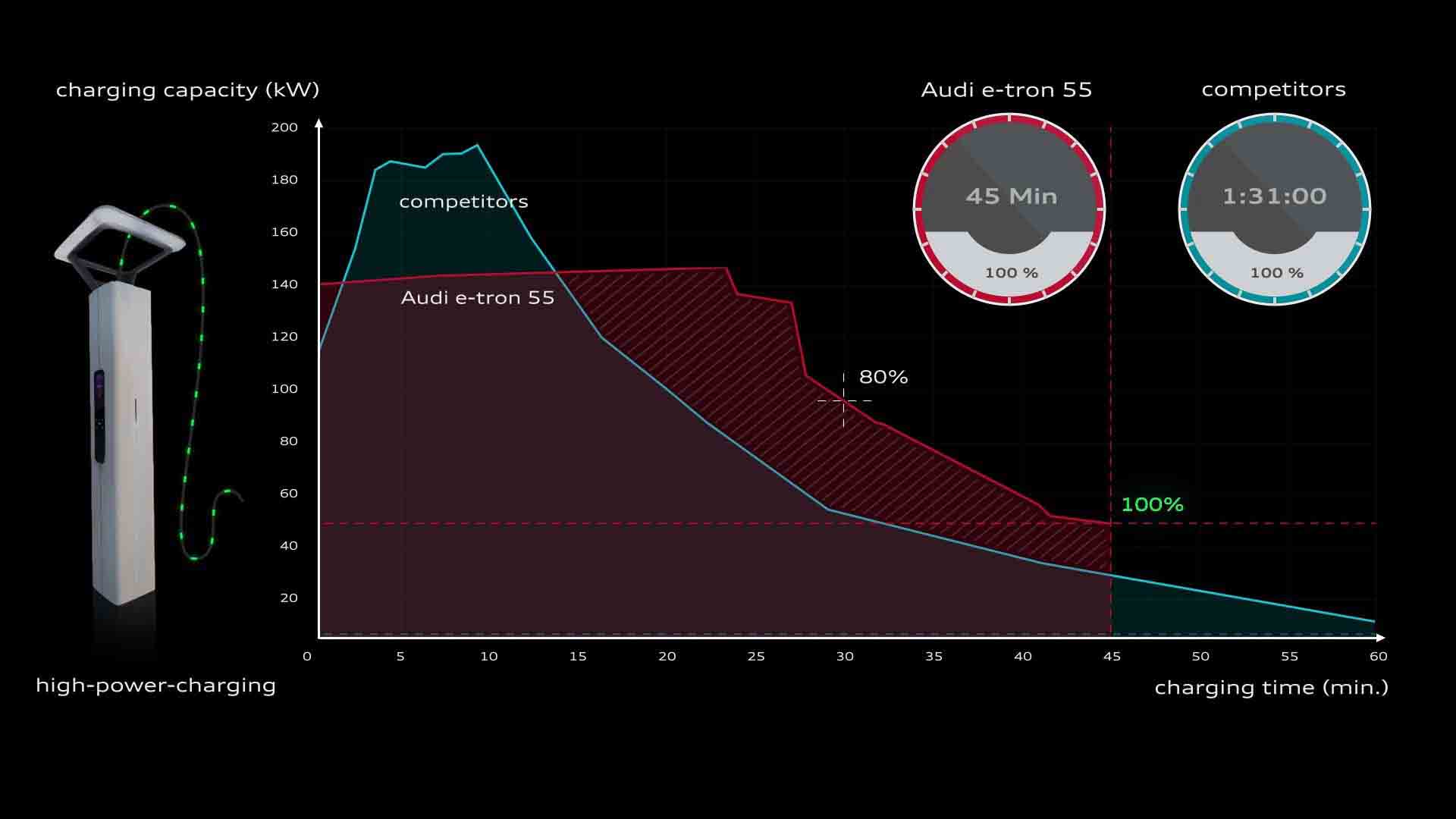The electric cars of the future will undoubtedly spend less time recharging. Powerful EVs such as the Audi E-tron GT and Porsche Taycan – both of which can top-up at 270kW – are merely the stepping stones to our 350kW future.
However, maximum charging capacity is only half the story. Electric car owners should pay as much attention to overall charging speed.
Most EV charging occurs at home or work – places where the car is probably parked for many hours, and the time taken to charge is therefore less significant. Speed is far more important when charging on the move, however, ideally via a fast or rapid charger.
The charging curve

Many customers look at charging capacity as a key attribute of an electric car. Measured in kilowatts (kW), values might range from 3.6kW (in a Citroen Ami) to 270kW (in a Maserati GranTurismo Folgore).
However, this figure is of limited use if it concerns quick refuelling at a fast charger. What’s more important is a higher charging capacity over a longer period of time.
In other words, if an electric car charges with maximum output over a short period then lowers its power early, to protect the battery, the overall charging speed is also lowered. This is where the so-called ‘charging curve’ comes in.
The graph below shows how the Audi E-Tron 55, for example, can charge between five percent and 70 percent states at the maximum capacity before the battery management system reduces the charge. Using the same 150kW charger, some rival EVs hit a higher peak capacity early on, but their overall charging speed is slower.
Less haste, more speed

In any electric car, the final 20 percent always takes longer to preserve the life of the battery. Regularly charging to 100 percent can actually be bad for the battery, which is why car manufacturers often quote a charging time up to 80 percent.
That said, on longer journeys where range really matters, or if you don’t have the option to recharge at home, having a car that fills up to 100 percent quickly really makes a difference.
If you intend to recharge on the move, knowledge of your car’s charging overall speed, as well as its maximum charging capacity, could add up to valuable time saved over the course of a year’s driving.
ALSO READ:
Can I use a Tesla Supercharger to charge my non-Tesla electric car?


[…] Recharging to 80 percent capacity takes 30 minutes in the 50kWh version and 45 minutes in the 75kWh van, both using a 100kW public charger. […]
[…] Recharging to 80 percent capacity takes 30 minutes in the 50kWh version and 45 minutes in the 75kWh van, both using a 100kW public charger. […]
[…] All Mini Electric owners are eligible for free 12-month access to the Mini Charging service. This allows access to more than 11,000 public chargepoints in the UK, including Ionity and Instavolt rapid charging devices. […]
[…] EV charging capacity vs. charging speed – which matters more? […]